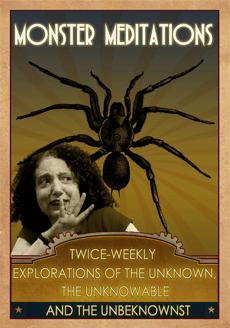I can’t say that I’m a pure “pants-er” — plotting as I go along “by the seat of my pants” — but I’m not a scrupulous outliner either. It’s not for lack of trying. I admire systematic authors with notes on bulletin boards, schematics, detailed timelines and colorful diagrams. I just can’t wrap my head around all those incredibly useful tools. In fact, each time I’ve tried one I discover that I’m spending more time working on the outline than I am on writing.
Still, I’m not spontaneously spinning out a complex mystery story with misleading red herrings and subtle clues to the truth. I have to do something to keep me from writing off the rails and off on crazy detours. My system, for lack of a better word, involves leaving myself notes about what has to happen later in the story, and, whenever possible, reminding myself where I’ve planted something related earlier in the manuscript.
This is not scientific or particularly organized and I know it. Especially when some of those notes or bits of dialog are handwritten in one notebook or another that never seems to migrate to my desk at the right time.
How do I manage to get it down on paper (drum roll), it’s magic! No, not magic, hard work and, most of all, a deep belief in multiple drafts! That’s when the decisions to move this earlier in the story or to take this out entirely or to trim or cut or shave the text, start rolling. Could I do that kind of organization earlier in the process? Maybe, but so far… nope!
Outlines, schematics, sketches, timelines, diagrams — oh my. If you use them, please share your experiences. I’d love to learn from a more systematic storyteller.





Ya, not a plotter in any sense of the word. The few times I have used an outline it has been to get my head straight after I have already written the story and something isn’t fitting right.
This is why I love scrivener. I can use scrivener to break the story down into various scenes and then mix and match as I see fit.
I should probably check out Scrivener, but I’m not sure that breaking down the story is what I need. And I’m afraid that learning it will be another distraction from the eccentric process already in gear. Once or twice I’ve been told, “move this part to the top” OR “sneak this in later” by early readers. That was useful!
I’m a back to front plotter, or maybe that should be a middle to front plotter. 🙁 At any rate, I start plotting only when my story/characters/world become too complicated for me to keep everything straight in my head. As I’m getting older I’m reaching that point a whole lot sooner. Then come the timelines, and files called ‘plot1, 2, 3’ etc and reams of notes, horrible sketches… and lots of angst.
If you discover a good way of doing the plotting part please bottle and I’ll pre-order a dozen.
I doubt that there’s a truly angst-free approach. But if I discover it — I will share!
(FYI, there is no way your sketches are as bad as mine….LOL)
Well, I flew by the seat of my pants on Lost Girl Road, and now I’m cutting tons of bloat as I revise. Scrivener has proven worth its weight in gold for re-organizing material. I also know I will carefully plot things out for my next novel, whenever that happens… Scrivener is also great for that as well.
I guess I’d better check it out.
Right now I’m traveling and giving myself a little space/time away from the novel-in-progress. I think travel is good for short stories and they, thankfully, don’t require an outline.
Perhaps my next novel will be written in an organized fashion?